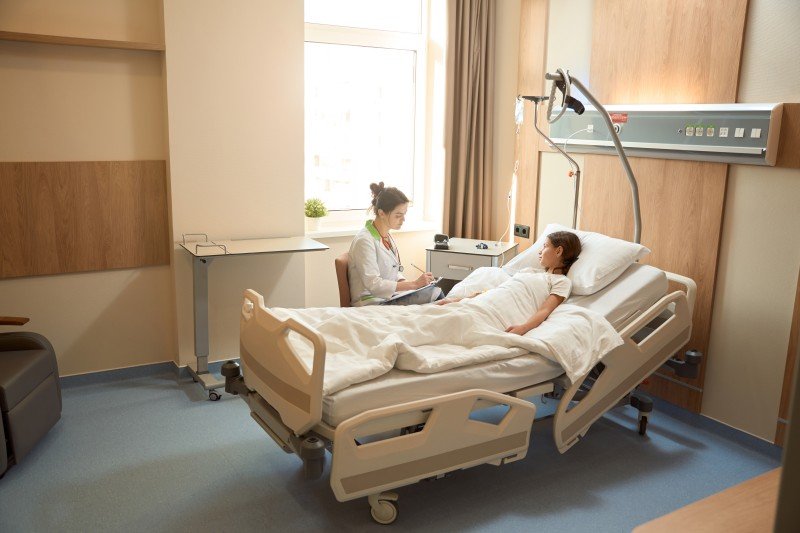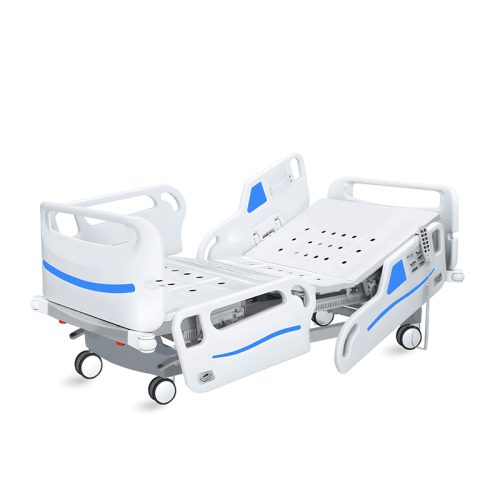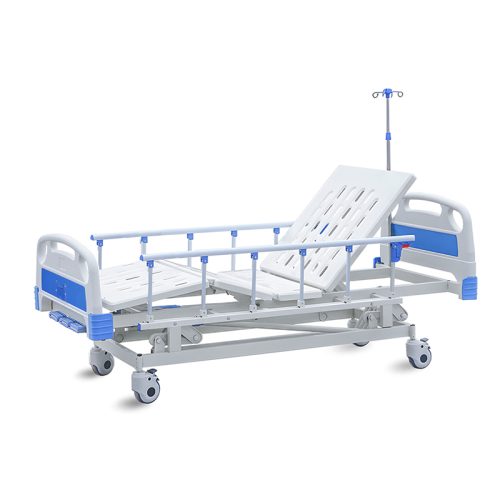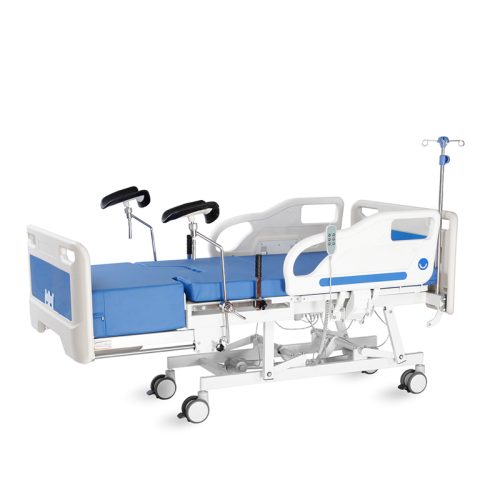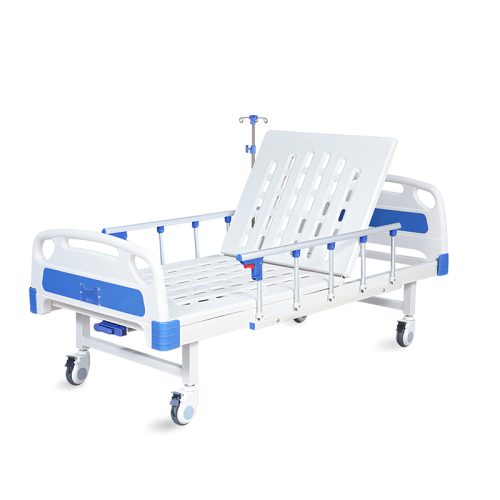
- Krankenhausbett
Beste Krankenhausbetten für ältere Menschen zu Hause: Komfort und Zugänglichkeit
- Unter kelingmedical
Choose the right hospital bed for elderly at home to increase their health, treat medical problems, and enhance their quality of life. We’ll be talking about the best elderly hospital beds in this article and what makes them perfect for home use, along with recommendations on how to pick the best bed according to your patient.
Why Select an Older Person Hospital Bed?
Home hospital beds for older adults are specially manufactured for the different challenges elderly patients can have. Mobilisation becomes harder, and medical conditions, changing posture, and getting a good night’s sleep become harder. A hospital bed can offer you some benefits that a bed simply can’t:
Enhanced Comfort: Adjustable elements help adjust your body posture and fit to prevent aches and pains.
Safety Options: The bed for the elderly usually has side rails, fall protection and lockable casters for safety.
Facilitate Caregivers: Caregiver can make modifications without any physical stress to ensure their health and reduce the likelihood of harm.
Repositioning: Low-mobility patients can be helped by moving the bed back and forth so circulation improves and you avoid pressure sores.
What To Look For When Buying Hospital Beds for the Elderly.
Flexible for Comfort and Health — Our Patient.
The biggest plus point of the hospital bed for elderly patient in the home is that it can be adapted. Such beds can be adjusted according to the patient’s specifications which offers greater comfort and less hassle in medical treatment.
Head and Foot Lift: The head and foot of the bed can be lifted for elderly people who have a certain illness like respiratory problems, arthritis or digestion problems. Moving the head up will help you breathe and if you raise your feet it will reduce the swelling and increase the circulation.
Height Adjustment: With adjustable height, caregivers can reach out to treat the patient without pulling on their back. It can also lower the bed to a level that’s safe from falling, and it can be used to transfer patients from the bed into a wheelchair or chair.
Sicherheitsmerkmale
When it comes to a hospital bed for an elderly person, safety comes first. The beds have many attributes that make accidents less likely and the patient’s safety better.
Rails: Changing side rails to prevent falls because they will keep the patient from falling out of bed. They can be raised for safety and lowered when needed so the patient can enter and exit the bed themselves.
Lockable Wheels/Castors: Lockable wheels or casters for home hospital beds can be seen. This keeps the bed from flung over on a dime, and keeps it firm when the patient is in it.
CPR Function: There are some hospital beds that have the capability to do CPR or able to be moved to positions where resuscitation may be performed if required.
Matratzen-Kompatibilität
The mattress is one of the most critical aspects of the hospital bed for the elderly patients that are prone to sitting in the bed for hours. Comfortable, supportive mattress: A supportive mattress will avoid pressure sores and provide you with a better sleep.
Pressure Relief: Specialised pressure-relieving mattresses for the elderly are ideal for old people’s hospital beds, as they distribute the patient’s weight across the bed. This lowers the chance of bedsores (an often observed condition among patients that cannot move).
Comfort and Support: You want a mattress that’s the right combination of softness and support. For maximum comfort and to handle medical problems, mattresses with memory foam, air or gel are generally the ones to go for.
Benutzerfreundlichkeit für Pflegekräfte
A hospital bed for an old person must be physically easy for the attendant to use, so that they can offer the best possible treatment. A good number of hospital beds are equipped with a remote or hand cranks to adjust the bed.
Controls with Remotes: Electric hospital beds usually have a remote control, so parents can easily raise and lower the head, foot and height of the bed by simply pressing a button. It saves on the physical labor of repositioning the patient.
Manual or Semi-Electric Beds: Some older patients don’t need a fully electric bed. Semi-electric or manual hospital beds can be used in these instances for the perfect combination of function and affordability.
Langlebigkeit und Konstruktion
Beds in hospitals should not be fabricated to be disposable, particularly in home care where the beds are likely to be utilized often. Pick a bed made from materials that can stand the tests of daily use.
Strong Frame: Purchase a bed with a sturdy frame constructed of durable materials such as steel or heavy aluminum for stability over the years.
The Hospital Bed Must Support The Patient’s Weight: The hospital bed should be capable of holding the patient’s weight safely. Most hospital beds have a capacity of 350-500 lbs. Bariatric hospital beds are weight-bearing for extra support.
Compact and Space-Saving Design
Beds for old patients at home should be made in a manner to be as small as possible, yet to serve all functions. Often hospital beds have smaller footprint, so you can place it in a smaller room or apartment.
Foldable Styles: There are hospital beds that have foldable frames or designs that can be folded and stored away, which is perfect for those who don’t have a lot of space.
Room for Mobility Aids: Be sure the bed is roomy enough for mobility aids like wheelchairs or walkers to be used along with it.
Affordable Options for Home Care
Hospital beds are expensive, but they are possible to acquire in a form that works for the price. Look for the patient’s unique requirements and get a bed that has basic features but doesn’t break the bank.
Manual/Semi-Electric Hospital Beds: If you’re looking for a cheaper hospital bed, manual or semi-electric hospital beds are usually less expensive than electric beds but nevertheless contain a large array of useful features.
Government and Insurance Assistance: There are government programs and insurance companies that will pay for a hospital bed for the elderly, if you need a bed for treatment or long term care.
What To Consider When Buying a Hospital Bed For An Older Person At Home.
For selecting the correct hospital bed for an elderly patient at home, there are several considerations like the patient’s age, mobility, caregiver etc. No two people’s circumstances are the same, and so the right bed will be determined based on things like:
How mobile the patient is. If they are able to get up and down on their own, an easy bed will do, but if they need assistance getting in and out, you want an adjustable bed with remote control.
The patient’s health, because some conditions may need a special modification, such as elevating the head or feet or lowering the bed to prevent fall hazards.
Finance and whether there is insurance or other financial support.
Schlussfolgerung
Home hospital beds for elderly are an enormous aid, a place of ease and security. Adjustable, side rails, mattresses that fit specifically for the elderly, and so on are included in these beds. A patient’s needs, caregiver convenience, and bed safety and comfort should be considered when selecting a bed.
Infusing money into a hospital bed with an appropriate mattress that the patient needs will allow the family to give their loved one the best care in the privacy of home. So whether it’s a cost-effective manual bed or an electrical bed that can be fully reprogrammable, the right one can make a difference in the patient’s and caregiver’s lives.
📧 E-Mail: inquiry@shkeling.com
🌐 Website: www.shkeling.com.cn
Wir freuen uns darauf, mit Ihnen eine erfolgreiche Partnerschaft aufzubauen!

